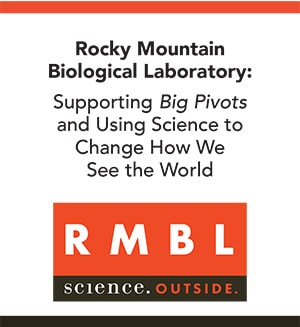It’s a good thing I got over my claustrophobia. I was in the bowels of Hoover Dam, the giant plug of the Colorado River, trying not to think about the mass of concrete around me or the volume of water behind me.
The concrete poured during the 1930s into that narrow chasm of Black Canyon 24 miles from Las Vegas was enough to pave a two-lane highway from San Francisco to New York City. The dam is 660 feet thick at the bottom, wider than two football fields narrowing to 45 feet at the top. It is shaped like a huge curved axe-head.

Each of the 17 hydroelectric generators at Hoover Dam can produced electricity sufficient for 1,000 houses. Photo/Allen Best
Our guide on a special tour for reporters shared a subterranean wormhole in the concrete. Hunched down, I made my way toward the glint of sunshine. There, I laid my hands on the face of the great 776 feet-tall dam.
Los Angeles Times columnist Michael Hiltzik several years ago captured the magnificence of the human endeavor with the title of his book: “Colossus: Hoover Dam and the Making of the American Century.”
In the early 20th century, the river was a beast, its spring floods of water from the mountains of Colorado, Wyoming, and Utah predictably unruly, its water an anomaly in the arid American Southwest. In the baking but fertile sands of the Mojave Desert, agriculturalists saw great potential. Los Angeles saw water but also the hydroelectric power needed to create a great city.
LA could not do it on its own. An agreement among the seven states of the Colorado River Basin to apportion the waters was needed. That compact forged in 1922 delivered the political foundation for federal sponsorship of the dam’s construction, which began in 1930.
The December day we visited was coolish. The canyon can become an oven, though. During construction, 112 deaths were reported. But that does not include 42 people who died from pneumonia, many from tunnels bored into the canyon with equipment that produced thick plumes of exhaust gases and helped produce heat of up to 60 degrees C ( 140 degrees F).
Still, the dam’s construction represented triumph during a time of despair. The United States and much of the world was in depression. In the American heartland, giant clouds of dust caused misery and literally suffocated fowl and beast, but humans, too. Hoover Dam—at first called Boulder Canyon Dam—represented a story of human success. Look at what we’re capable of doing, it said, when we set our minds to it!
Water from the dam has been filled to overflowing just twice. One of those times was in 1983. I remember it very well. I was working at the headwaters of the Colorado River in the Colorado resort town of Winter Park. We had an average winter. Spring was anything but. It started snowing in March and didn’t quit until mid-June. The water that gushed downstream took dam operators by surprise.
Since 2002, the principal problem has been too little water. Droughts, as severe as any before recorded, have repeatedly left Colorado’s slopes snowless when normally they would be thick with snow. New evidence also comes of rising temperatures, which rob streams and meadows of water through increased evaporation and transpiration.
Then there was the faulty promise of that compact struck in 1922, an assumption of far more water than the river has routinely delivered. That, however, did not stop the cities and farmers from inserting their straws into the river and its reservoirs. When I visited in December, the reservoir was 40% full—or, if you prefer, was 60% empty.

Hoover Dam has enough concrete fora four-foot-wide sidewalk around the Earth at the Equator. Photo/Allen Best
Energy, not water, powered my desire to see Hoover. When completed, the 13 hydroelectric generators provided a large amount of electricity in the Southwest. Now, the output is dwarfed by other sources, increasingly renewables. Increasingly, our guide said, the water is released to generate electricity in ways that shore-up the intermittent renewables.
Hoover Dam may also play a role in our future of renewable energy. Los Angeles Water and Power has been investigating whether the dam’s generators and Lake Mead can be used to create what constitutes a giant battery. The water would be released again and again, when power is needed most to fill the gaps between renewable energy, then pumped back into the reservoir when renewable power is plentiful, such as during sunny afternoons.
The answer is of interest far beyond Los Angeles. In places like Denver, utilities say they can now see the way to 80% emission-free power generation by 2030. But to 100%? Lithium-ion batteries may be part of that answer, but they can store energy for just four hours. Maybe another, partial solution can be found at Hoover and other dams. We do need the answers soon, as the need to reduce our emissions has become pressing.
Why support Big Pivots?
You need and value solid climate change reporting, and also the energy & water transitions in Colorado. Because you know that strong research underlies solid journalism, and research times take.
Plus, you want to help small media, and Big Pivots is a 501(c)3 non-profit.
Big grants would be great, but they’re rare for small media. To survive, Big Pivots needs your support. Think about how big pivots occur. They start at the grassroots. That’s why you should support Big Pivots. Because Big Pivots has influence in Colorado, and Colorado matters in the national conversation.
- How much water remains in southeast Colorado’s aquifers? - April 18, 2024
- Keeping water rights on the Yampa while utilities figure out future technologies - April 18, 2024
- How can Colorado add this much renewable energy by 2040? - April 18, 2024





